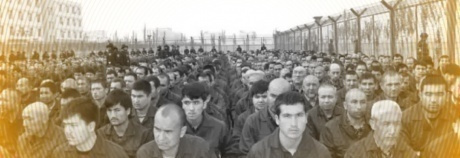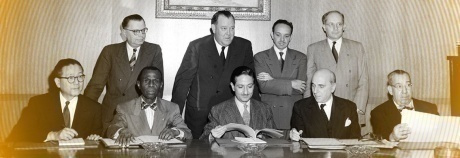In short
Islamic terrorism is a criminal phenomenon, which, over the recent years, has increased its activity by carrying out gruesome attacks, making a strong media impact. It is nearly hundred years old – the first movement, which theorized the use of force to restore the fundamentalist and orthodox lifestyle of the first Muslim believers, in facts, was that of the Muslim Brotherhood founded in 1928 in Egypt. Later on, it strongly linked itself with such liberation struggles as the Palestinian land claims and the Iranian revolution, but it was only after the Russian-Afghan war that it acquired a global anti-Western feature.
Al-Qaeda and ISIS, the most recent Islamic terror organizations, with their gruesome attacks, made clear to the world the anti-modern goals of fundamentalism and, above all, their cruel and bloody means to achieve them. Their attacks have hit and are still hitting the war zones in the Middle East and Africa, but also the Western big cities, sowing destruction and death.
The ideology of the Islamic state: between wahhabism and salafism
In June 2014, ISIS proclaimed the restoration of the Islamic caliphate, wedged between Iraq and Syria. It is the closing act of a process that had started with the rebellion against the Iraqi government of part of the higher ranks of the army following the US invasion of Iraq.
The political and moral crisis of the ancient leading classes in Iraq and Syria produced a phenomenon of radicalization of the social ranks that felt ousted from power. More and more numerous groups approached and eventually joined religious ideologies of fundamentalist mould, such as Salafism, Wahhabism, Jāhdism and Pan-Islamism. In 2013, the Islamic State of Iraq unilaterally proclaimed its unification with the Syrian branch of Al-Qaeda, which had conquered part of the Syrian territory during the civil war against the government of Bashar al-Asad. Following this proclamation, the group, having chosen the Syrian city of Raqqa as its capital, changed its name into Islamic State of Iraq and Syria (ISIS).
The ideology of the self-proclaimed Islamic State essentially traces back to the doctrines of Salafism, Wahhabism and Pan-Islamism.
Variously defined – e.g. as “orthodox”, “ultraconservative”, “austere” - Wahhabism represents an extremely strict form of Sunni Islam, insisting on a literal interpretation of the Koran. Wahhabites believe that all those who do not practice Islam according to the modalities they indicate, are heathens and enemies of Islam. Critics though purport that the Wahabite strictness has led to a rigorist interpretation of Islam, reminding us their line of thought gave rise to such characters as Osama bin Laden and the talibans.
Salafism is a stream of thought that dates back to the Middle Ages, with features of openness and reformism. The first apparent and official warning signs of the ideological and strategic change of salafism, from “reformist” and tolerant movement to a “fundamentalist” one, overtly hostile to modernity, can perhaps be found in Tunisia, around the 1930s.
It was in that context that salafism was permeated with a Wahhabite spirit that, sweeping away the millenary cultural heritage of Islam, came to stress the “vices” imported from the West and the need to decree the ostracism of the Christian missions and their proselytizing activities.
In Egypt, the transformation of Salafism occurred in the same period, with the rise of the so called “Neo-Salafiyya”. In facts, several different organizations were set up, including the Muslim Brotherhood, whose audience was no more the educated and “enlightened” minorities (somehow open to Western culture) but the least educated masses, engaging in a deep and extensive work of “recall” to Islam, i.e. of bringing them back to Islam’s faith and canonic practices, meant in an anti-intellectual and conservative sense; a vision that is basically opposed to that of the movement at its origins.
The “Foreign Fighters”
When we talk about the ISIS and the Islamic State, we must mention the Foreign Fighters: they are those who, although not geographically belonging to the areas of birth of the Caliphate, decide to affiliate to the Islamic State by embracing its ideologies and combat methods in change for a promise of a better life in a State that claims to ensure social justice and wellbeing.
It is very difficult to trace a univocal portrait of the people who decide to affiliate to the Islamic State, given the variety of their provenances: the Foreign Fighters come both from the lower strata of society and from well-off families, their levels of education are differentiated and their enrollment happens both between muslims (of first, second or third generation living in the West) and among the so called “last minute converts”. But what do all these people have in common? Why do they decide to enroll to fight a war which is not theirs? Probably, they find in the ISIS a strong ideology, a motivation to fight, as well as the prospect of a new life in which they can affirm themselves also from a personal point of view. They identify themselves with the jihad often in order to give their own lives a meaning: from Europe (and not only from there) they leave to join the training in the Middle East to then come back and often hit the very world they come from.
Jihad thus becomes, for the Foreign Fighters, a reason of life, so much that they come to identify themselves with some principles and become eager to sacrifice their own life for them.
Currently it is very difficult to control this phenomenon, above all because their proselytizing is not performed only in public spaces but also and mostly on the Web, in a steady way. According to the most recent estimates, it is thought that the Foreign Fighters are nearly 20,000 and of extremely varied provenances. Not only from North Africa and the Middle East, but also from Europe and Russia.
The end of the jihadist utopia of the ISIS, after the fall of Raqqa, Mosul and Deir ez-Zor, however entailed another challenge, very dangerous for Europe: the one of the returning Foreign Fighters. Many have been jailed and tried, while others have been inserted into rehabilitation and resocialization programmes.
The Soufan has identified at least five different categories of returnees: the ones who have come back soon or after a short stay, before Caliphate started losing ground; the ones who returned later, but were disillusioned in that the group assumed more and more violent and brutal conducts; those who have not had any scruples to join the ISIS tactics, up to the point of being ready for new battles; those who were compelled to leave the Caliphate or captured; the ones sent to fight in other scenes, such as the commandos that attacked Paris or Brussels. Only few of them though would be part of active cells.




















